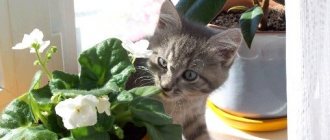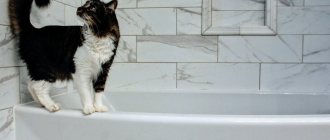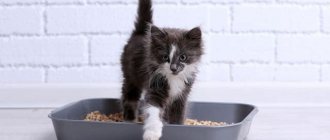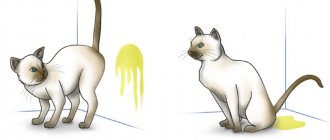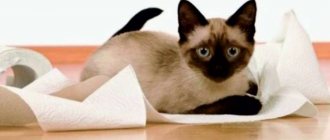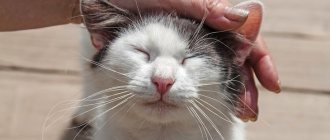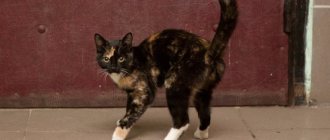If you have houseplants and cats, chances are you've found feces in the pot. I recently encountered this problem and wanted to know how to prevent it. I did some research and put together this article so that it can help you as well.
How to stop cats from pooping in a flower pot? The best methods to prevent cats from peeing on your houseplants are to use cat repellent, place rocks on the surface of the soil, and train your cat to use the litter box. There are other methods that will work but may not be suitable for cats.
There are many more details you need to know to prevent cats from peeing on your flowers, so keep reading. You should also be aware of methods that are harmful to your cat and avoid using them.
How to keep your cat away from potted plants?
Covering the soil with large stones
The easiest way is to use small stones in the soil. These can be smooth river stones or white flint desert stones.
Cats prefer to rest on the ground, so placing rocks on the ground makes it unattractive to your pet.
© shutterstock
Rocks add interest to your potted plant and also serve as mulch. They will help retain moisture in the soil longer. And keep the soil temperature regulated.
This method will keep many cats away from your flower pots, but there will still be some other cats that will poop on the rocks.
You may want to look at other methods that may work better for these cats.
Wrap chicken wire around a potted plant
Another good option is to cover your potted flowers with chicken wire. This acts as a cage and keeps animals away from your potted plants.
You need to work this kind of wire with pliers to wrap it around the entire plant because it is stiff.
If you have a large potted plant, one piece may not be enough. You may need to fasten two pieces of chicken wire together. This is because you will have to wrap the chicken wire around the base of the potted plant rather than completely covering it.
Spray cat repellent near a potted plant
If you don't want to cover your potted plant with chicken wire or the soil with rocks, you have the option of using cat repellent. You can buy it at the store or make your own natural one.
You can use essential oils such as lavender, peppermint or lemongrass essential oils to make this cat repellent. Or you can use something like apple cider vinegar.
The idea behind using cat repellent is that it will suppress the cat's odor so they won't go near the area treated with it.
Do not use essential oils or other materials as a spray because they are too strong and may be toxic to the cat. Make a diluted mixture of three parts water and one part essential oil.
You can then spray this mixture near the potty to discourage cats from approaching it. Be careful not to spray repellent directly onto the soil or plant.
Your plants may find this mixture too acidic, which may cause stunted plant growth. In the worst case scenario, you could kill your plants.
Therefore, use cat repellent with the necessary precautions: dilute it well and spray it near the potty, not directly into the potty.
Use a motion detector distraction device
The idea behind a motion detector distraction device is quite simple. When the cat approaches him, he makes a noise.
Most cats don't like to be disturbed, so this will scare them away. You can purchase such a device from local stores.
I like this method because it is the most effective way to prevent a cat from pooping in a potted plant, but it doesn't irritate the cat's senses like cat repellent.
Folk recipes
- White vinegar is a remedy that can eliminate even old odors. To prepare the solution, mix water and vinegar in a 1:1 ratio. Then you should wipe the urine with a regular rag and only then rub the prepared solution into the stain. Vinegar completely neutralizes the ammonia smell coming from urine. After some time, do not forget to wipe the treated area dry.
- Cleaner (enzymatic) . You should wash the urine dry and treat the area with a ready-made product. It contains special biological enzymes that quickly break down proteins in urine, thereby instantly eliminating unpleasant odor. An enzymatic cleaner can always be purchased at a specialty store. The product is great for removing odors from upholstered furniture and bed linen.
- Apple cider vinegar should be mixed equally with regular laundry detergent, applied to the dirty area, rubbed in thoroughly and left to act for several minutes. After this, remove the product with a regular rag.
- Bleach (no ammonia) . Wash the contaminated area with a regular cleaning agent and remove with clean water, wipe dry and treat with the prepared composition: mix water and bleach (1:10), pour into a spray bottle. Use the product very carefully, since the chlorine contained in it can ruin the color and surface structure.
- Iodine . Prepare a solution: stir 10 drops of iodine in 1 liter. water, then use it to treat the contaminated surface, leave for 10 minutes and wipe dry.
- Soda . Sprinkle the surface with regular baking soda. This natural product perfectly absorbs any odors. If the contaminated area is small, just rub soda into it with a sponge and leave for several hours, vacuum and wash with water.
- Squeeze the juice from the lemon, apply it to a cloth and gently clean the dirty area.
- Mix dishwashing liquid (2 tsp) with 0.5 tbsp. hydrogen peroxide. Apply it to the contaminated area (previously sprinkled with soda). Rub the solution thoroughly until foam is obtained, then allow to dry, vacuum and remove any remaining product with clean water.
- Mouthwash . First, remove the urine and wipe the surface dry, apply rinse aid to the stain, let it dry, repeat the procedure.
- Potassium permanganate is a strong oxidizing agent and an excellent deodorizing agent. Prepare a weak solution and treat the contaminated area with it, let it dry. Repeat cleaning (washing) several times until the cat smell disappears completely.
Among the most effective folk remedies are sleeping tea and Lenore.
How to train a cat not to shit on your flowers?
If you can train your cat to use the litter box, it will help prevent problems associated with using your flower pots.
© shutterstock
Make sure the litter box is large and comfortable enough for your cat to use. You should use organic cat litter, sawdust, or soil from outside.
Clean up cat litter every day as soon as the cat is done with her business. And wash the litter every week with soapy water.
Keeping the litter box clean will encourage your cats to continue using it instead of reaching for your flowers.
Removing odor from wood
It should be noted that a huge number of deodorants that promise to completely remove the smell of urine do not even cope with it halfway. Using these products you can only absorb or block the smell a little, but not dissolve the crystals. To remove odor from wood, you must choose products that contain enzymes that break down acid. If you need to get rid of odor on a wood floor, you should apply the product to the stain and let it dry to absorb so that the enzymes have time to break down the urine crystals from inside the wood. Only then treat the stain with a special product, strictly following the instructions on its packaging. The most effective means:
- Prepare the solution: dilute vinegar in water (1:4), then wipe the contaminated surface with the resulting mixture. To absorb the odor, sprinkle the surface thickly with regular soda and leave it overnight, then repeat the treatment with the product.
- Prepare a weak solution of potassium permanganate and treat the affected area. The desired effect can be achieved only after 3 times of treatment. You should carefully consider the shade of the solution to avoid staining the wood.
Despite their high effectiveness against the smell of cat urine, products containing chlorine should be used with extreme caution: wear rubber gloves and remove the cat from the room.
Can cat feces kill plants?
You may think that cat poop is organic and won't harm your potted plants. But this can cause serious damage to them.
The problem is that cat feces can contain harmful pathogens that will end up in your plants. This is even worse if you grow fruits and vegetables in pots for your own consumption.
Cat litter will also be high in nitrogen, which can damage plant roots.
Special means
“Zoosan” is a particularly popular product among consumers due to its affordable cost and practicality, and it is odorless.- “Odor Gone” is an aerosol that is absolutely safe for both animals and humans, consisting of natural ingredients.
- "Bio-GM" is a natural remedy that can completely eliminate odor, and not just mask it.
Why do cats shit in pots?
Cats pee in pots because they prefer loose soil. Cats have an instinct to bury urine and poop in the dirt. When a cat wants to poop or pee, she will dig a small hole and use it. Once the deed is done, they will throw dirt at him.
Because cats are instinctively drawn to dirt when they pee or poop, they will try to find it first. If they can't find it, they will find the next closest thing. This could be carpet, loose paper, or something similar.
Some cats are sensitive to changes in their environment. This could be something like moving house, new pets in the house, or having guests over.
This may make them restless and change their urinating habits. They may end up relieving themselves in unusual places, such as your pots.
Therefore, it is best to slowly introduce your cat to any changes in the environment so that she can get used to them.
Saving the carpet
The cat took revenge on one of the household members and made a puddle on his beloved and beautiful carpet. How to remove and how to get rid of this terrible smell? Let's try to save your carpet using the following methods:
- Laundry soap with glycerin. Thoroughly soap the stained area on the carpet, let it dry and rinse the carpet with clean water.
- Hydrogen peroxide, liquid soap and water. Pour into a spray bottle, apply to a dirty stain (pre-treated with soda), foam with a sponge, dry and vacuum away any remaining product.
- Glycerin is excellent at breaking down stone and is often used for both carpets and other surfaces.
- Soda with vinegar. Remove the fresh puddle, wipe dry and pour 3% (not 10%) vinegar over the contaminated area, let it dry, then sprinkle thoroughly with baking soda. Leave the product overnight and vacuum.
What to do?
Plant protection
The substrate should be covered with a special net, thick cardboard, a plastic bottle cut in half, or the pot should be wrapped with double-sided tape. After several unsuccessful attempts to reach the ground, the pet will lose interest in plants. Pebbles or pine cones on the surface of the substrate will also help to keep the cat away from the plants. Sharp objects that are unpleasant for the paws will prevent you from climbing into the pot and rummaging in the ground. The pebbles should be quite large so that the cat does not dig them out of the pot along with the soil. Toothpicks or sticks firmly stuck into the ground are also suitable.
You can place lemon or orange peels in pots - cats are repelled by the smell of citrus fruits. In this case, only fresh, smelling zest is effective; dried zest will not do any good. Foil, rustling newspaper or waxed slippery paper spread around the flowers will prevent a timid cat from walking on the windowsill. It’s also worth purchasing a special bio-spray repeller “Antigadin” based on essential oils and spraying “forbidden” places. As a rule, 2-3 sprays per day are sufficient for a lasting effect.
Reasons and background
It is important to understand in time what is causing the pet’s behavior and whether it is related to discomfort when using the toilet. The reason why a cat does not go to the litter box may be due to its location, unsuitable substrate, dirt, unpleasant associations, or even illness. Therefore, if a cat suddenly pees in his favorite ficus, you should under no circumstances beat or punish him.
There is an opinion that a cat shits in flowers out of resentment or wanting revenge for lack of attention. If the pet is not played or communicated with much, this is how it seeks to express its dissatisfaction and “teach” the owner a lesson. This is unlikely to be the case, since a kitten taken from the street does not shit out of spite, but out of habit of relieving itself in the ground. In this case, the animal should be raised from a young age, accustoming it to a tray.

